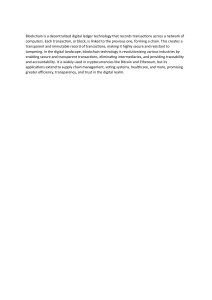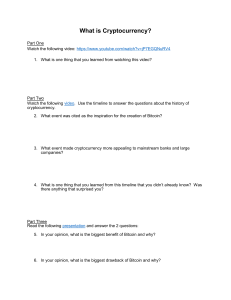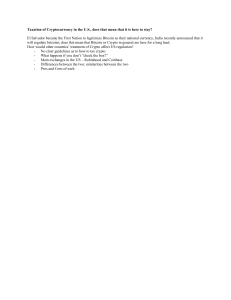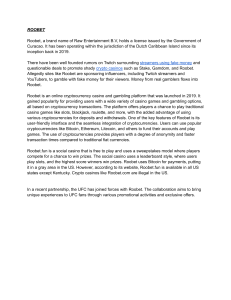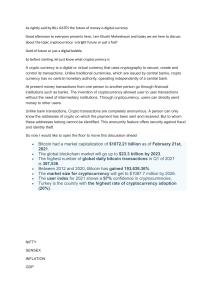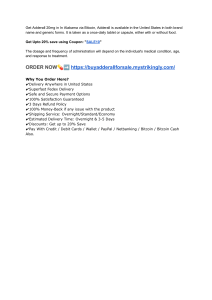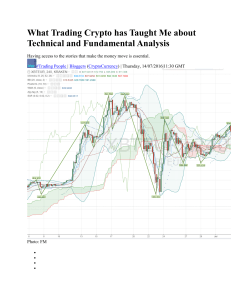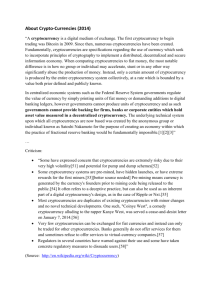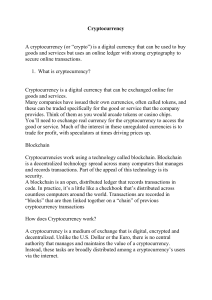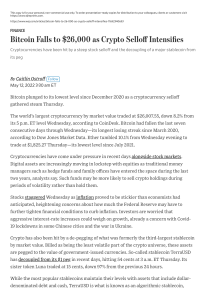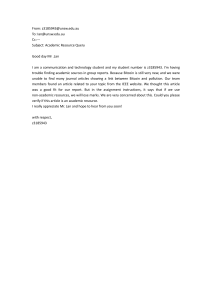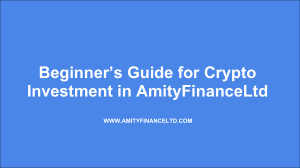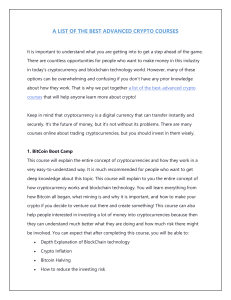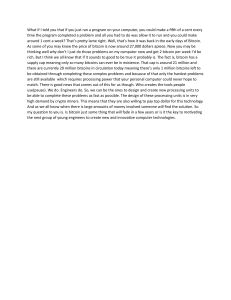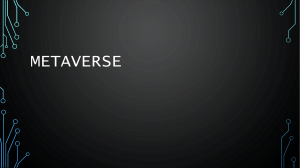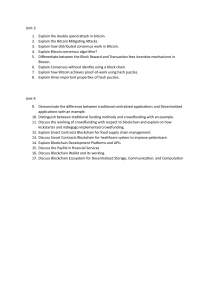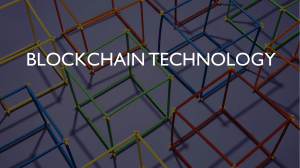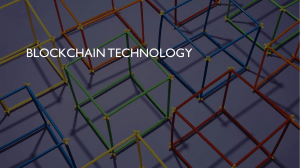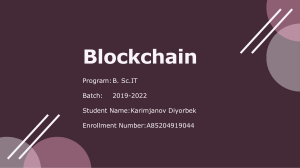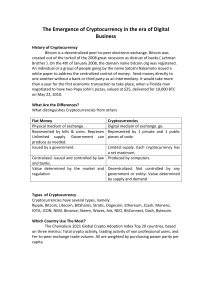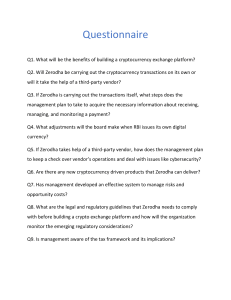“Regulation of Cryptocurrencies: Practice Nexus” The Theory- IMMACULATE D. MOTSI-OMOIJIADE
advertisement
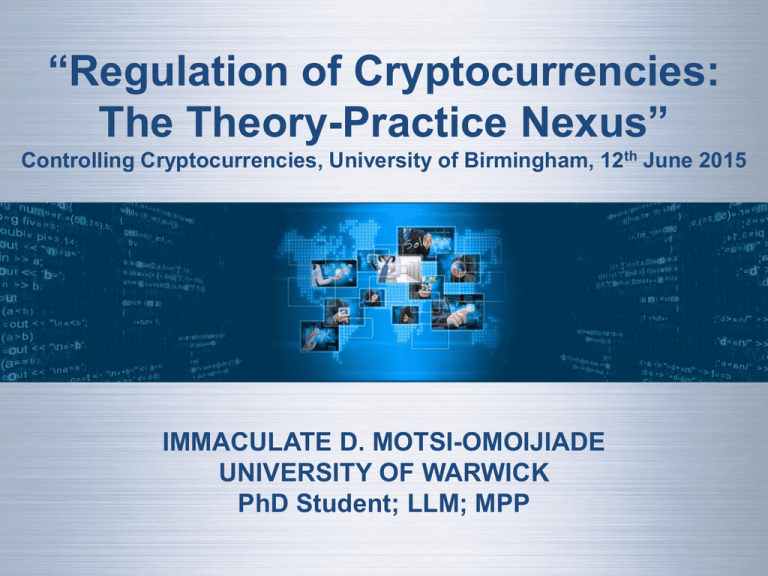
“Regulation of Cryptocurrencies: The Theory-Practice Nexus” Controlling Cryptocurrencies, University of Birmingham, 12th June 2015 IMMACULATE D. MOTSI-OMOIJIADE UNIVERSITY OF WARWICK PhD Student; LLM; MPP Agenda • Cryptocurrency Risk Profile Why? • Role of Regulation • What are the options? How? • How has this been applied in practice? • Regulatory Functions and Resources Who? • An open-source regulatory model Why? Why? “Regulation is an existential threat for Bitcoin because it can only compete effectively if it remains an unregulated asset class” Izabella Kaminska, (Financial Times) Why? “Nearly all government regulations are damaging to business… (but) no words written on a piece of paper by politicians ca n alter the way the (Bitcoin) protocol works ” Roger Ver (PanAmPost) Why? “As a portfolio manage r, when do you start advising to your clients that they have some cryptocurrency exposure?” Melanie Swan (Fortune Magazine) Why? “Without Government intervention…banks are not likely to provid e digital currency businesses with support” Why? “The absence of clear regulatory guidelines creates uncertainty in this space, and prevents legitimate players from entering the space.” Why? “Regulation is often thought of as an activi ty that restricts behaviour and prevents the occurrence of certain undesirable activities (the ‘red light’ concept). However, the activities of regulation may also be enablin g and facilitative (the ‘green light’ concept) ” Harlow, C and Rawlings, R (2009) How? ‘Return of the ‘Command and State’; Limitations Control’ of Self-Regulation; Meta-Regulation; ‘Better Regulation’ How? “Sunshine Regulation”/ Laissez-faire “Enforcement- “Command and Based” Control” How? Who? Regulators (Prudential and Conduct) Miners (Bitcoin ‘Generators’) Retailers & Consumers Investment Banks & Investors Exchanges & Money Transmitters Consultancy Firms & Interest Groups Supra-National Agencies Who? Information Gathering Functions Which Actors? Modifying Behavior Standards Setting Expertise; Legitimacy; Resources Information; Position; Finances; Capacity Who? Open-Source Regulatory Model • Networks and “the strength of weak ties” • Beyond “seeking comment” • Use of blockchain technology in a form o f “legal programming” • Towards “technology neutral” regulation Thank You
